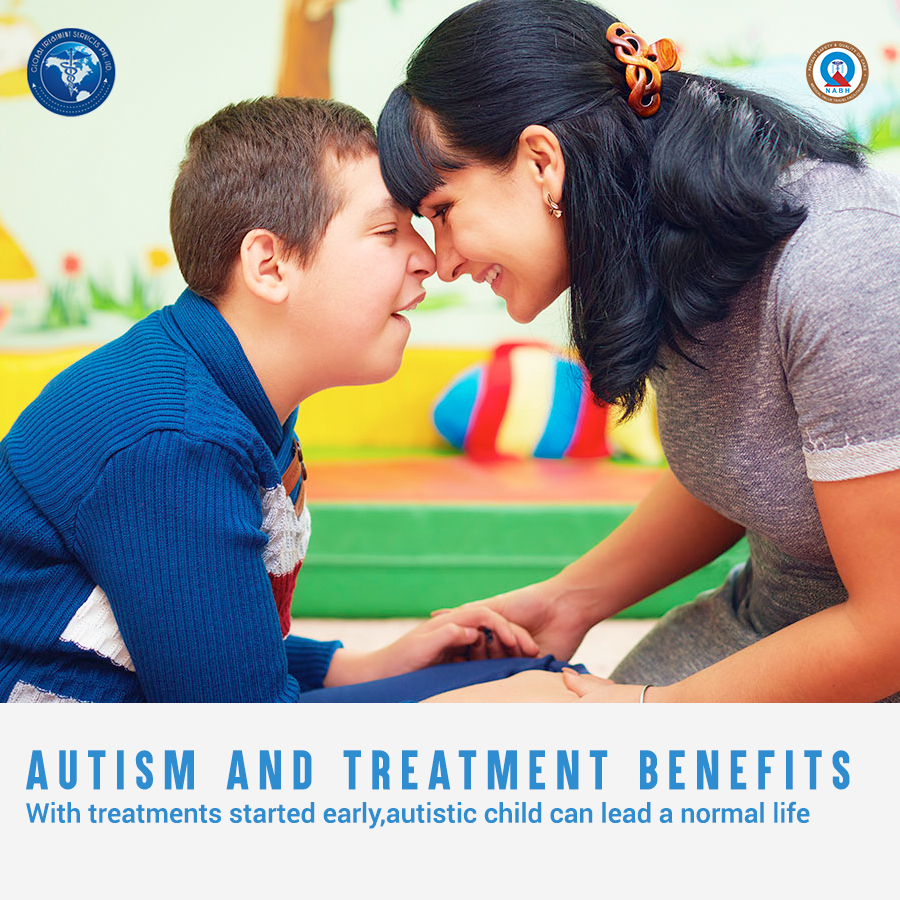 ASD is broad term used to describe a group of developmental disorders;autism has many subtypes.According to Diagnostic and Statistical Manual of Mental Disorders, five different ASD subtypes are
ASD is broad term used to describe a group of developmental disorders;autism has many subtypes.According to Diagnostic and Statistical Manual of Mental Disorders, five different ASD subtypes are
- with or without accompanying intellectual impairment
- with or without accompanying language impairment
- associated with a known medical or genetic condition or environmental factor
- associated with another neurodevelopmental, mental, or behavioral disorder
- with catatonia
It merges autistic disorder, childhood disintegrative disorder, pervasive developmental disorder-not otherwise specified (PDD-NOS) and Asperger syndrome under ASD.
Although ASD can be a lifelong disorder, treatments and services can improve a person’s symptoms and ability to function.
Signs and Symptoms
People with ASD have difficulty with social communication and interaction, restricted interests, and repetitive behaviors.
Social communication / interaction behaviors :
- issues with communication, including difficulties sharing emotions, sharing interests, or maintaining a back-and-forth conversation
- issues with nonverbal communication, such as trouble maintaining eye contact or reading body language
- difficulties developing and maintaining relationships
- Failing to respond to calling their names
- Having gestures that do not match what is being said
- Having an unusual tone of voice that may sound sing-song or flat and robot-like
Restrictive / repetitive behaviors may include:
- Repetitive movements, motions, or speech patterns
- Getting upset by slight changes in a routine
- Being more or less sensitive than other people to sensory input, such as light, noise, clothing, or temperature
- Fixated interests or preoccupations
People with ASD may also experience sleep problems and irritability.
Although people with ASD experience many challenges, they may also have many strengths, including:
- Being able to learn things in detail
- Being able to remember information for long periods of time
- Being strong visual and auditory learners
- Excelling in math, science, music, or art
Causes and Risk Factors
- Having a immediate family member with ASD.
- Being born to older parents
- Having certain genetic conditions like Down syndrome, fragile X syndrome, and Rett syndrome
- Very low birth weight
- Metabolic imbalances
- Exposure to heavy metals and environmental toxins
- Fetal exposure to the medications valproic acid (Depakene) or thalidomide (Thalomid)
Diagnosis
ASD can usually be reliably diagnosed by the age of two by analysing a child’s behavior and development.
Diagnosis in young children is often a two-stage process.
- General Developmental Screening during Checkups
- Additional Evaluation
This second cycle of assessment is carried out by e a team of doctors and other health professionals who are experienced in diagnosing ASD.The evaluation may assess cognitive level or thinking skills,language abilities and age-appropriate skills needed to complete daily activities independently, such as eating, dressing, and toileting.The comprehensive evaluation may also include blood tests and hearing tests.
Diagnosis in older children and adolescents are often recognized by parents and teachers.Older children and adolescents may have trouble understanding figures of speech, humor, or sarcasm. Parents may also find that their child has trouble forming friendships with peers.
Diagnosing ASD in adults is often more difficult than diagnosing ASD in children. In adults, some ASD symptoms can overlap with symptoms of other mental-health disorders, such as anxiety or attention-deficit/hyperactivity disorder (ADHD).They have issues with social interaction and communication challenges,sensory issues,repetitive behaviors and restricted interests.
Treatments and Therapies
Treatment for ASD should begin as soon as possible after diagnosis. Early treatment for ASD is important as proper care can reduce individuals’ difficulties while helping them learn new skills and make the most of their strengths.
Medication
A doctor may use medication to treat some symptoms that are common with ASD like irritability,aggression,repetitive behavior,hyperactivity,attention problems,anxiety and depression
Behavioral, psychological, and educational therapy
These programs are typically highly structured and intensive and may involve parents, siblings, and other family members. Programs may help people with ASD to learn life-skills necessary to live independently,reduce challenging behaviors,increase or build upon strengths and learn social, communication, and language skills.
With treatments started early,autistic child can lead a normal life.High quality early intervention can improve learning, communication and social skills, as well as underlying brain development.
For any queries regarding treatment facilities,email us at query@gtsmeditour.com

Post a comment